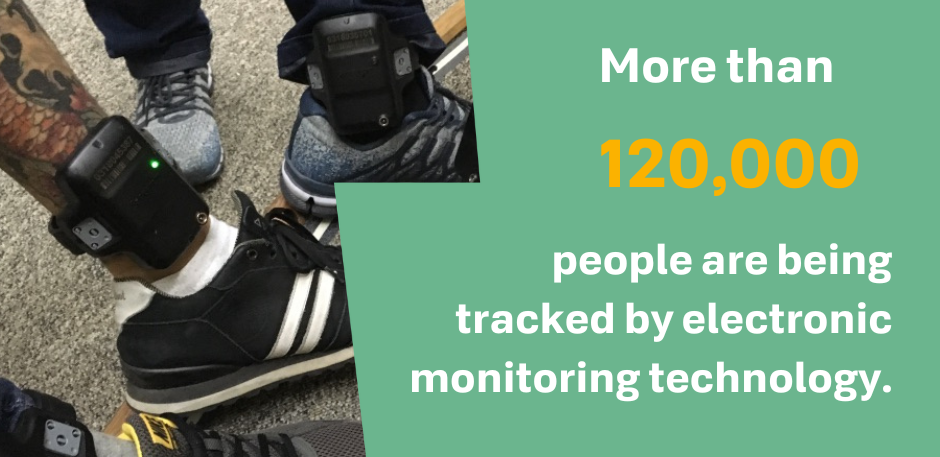
Pretrial Electronic Monitoring Across the United States
Across the United States each year, hundreds of thousands of people accused but not yet convicted of crimes are required by the courts to participate in electronic monitoring programs. These people are fitted with a locked, tightened ankle shackle, which often tracks every move they make.
Pretrial electronic monitoring programs represent a fast-growing type of incarceration that imposes significant harm and burdens on people who are subject to it. We interviewed people subject to monitoring, program administrators, judges, prosecutors, and defense attorneys across select jurisdictions to better understand how pretrial electronic monitoring is used.

Pretrial electronic monitoring programs lack transparency and accountability, are punitive in nature, and are unsupported by any research establishing a pattern of successful outcomes.
Monitored people provided gut-wrenching accounts of the ways their health, their employment, and their families were hurt by electronic monitoring. EM is an invasive tool that not only surveils accused people but also their family members. All of the monitored people we interviewed spoke about living in fear while on the monitor.
System actors generally understood that movement for work and medical appointments was important, but they had varied approaches to other types of movement, such as grocery shopping, picking up a child from school, or providing transportation for a loved one. Some jurisdictions offered more flexibility than others, but movement decisions were often made arbitrarily.
National groups that provide guidance to jurisdictions on appropriate treatment of people accused of crimes have criticized electronic monitoring. The National Association of Pretrial Services Agencies, which promulgates standards for pretrial release and diversion programs, does not endorse the use of electronic monitoring.
Most jurisdictions we surveyed had no formalized or standardized process for determining who was placed on electronic monitoring, how long they were monitored, or what rules they had to follow. Despite decades of use in the pretrial context, no evidence has emerged that electronic monitoring is a effective at reducing public safety risk or increasing appearance in court.
This report offers several strategies and tactics for responding to the failures of electronic monitoring.